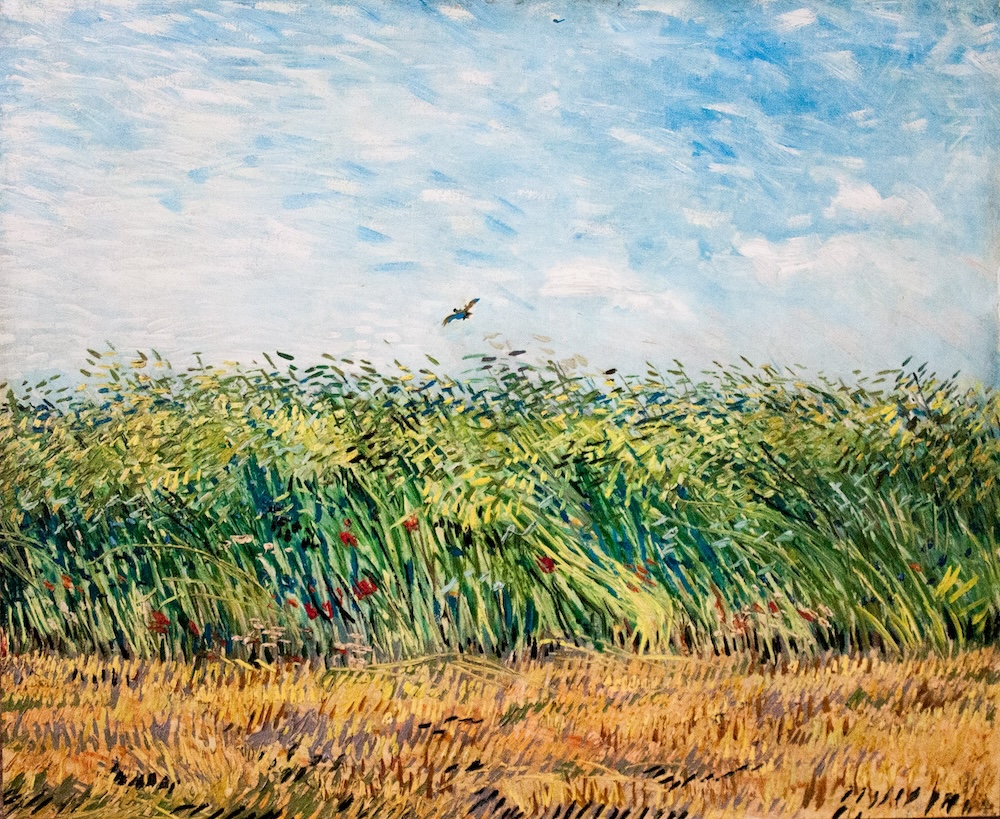Wheat Field With a Lark, 1887 by Vincent van Gogh

A beautiful landscape, Impressionist in its outdoor coloring and the woven mixture of the brush strokes, but above all in the tender, poetic quality of the early summer day, with an airiness that belongs to the wind more than to the atmosphere. The clouds and the slender wheat are blown in the same direction as the flying bird. The simplicity of the division into three bands - sky, wheat, and foreground - would be exceptional in an Impressionist painting, which is more disposed to asymmetry and unexpected vistas. Also distinct and in keeping with Van Gogh's love of the object-reality is the conception of the stroke as an equivalent of the structure of what he represents; hence the marked difference between the flecking of the sky and the touches that render the wheat, the poppies, and the stubble, each with its own shape and direction, as well as local color.
The execution of Wheat Field With a Lark is rapid and lyrical, completely permeated by qualities of the scene - a breathing work. Particularly find art the variations within the broad simple areas of the canvas: in the sky by changes in value alone, by different tones of blue, lighter and darker; in the wheat by passages from cool to warm, yellow-green to blue-green, with minor touches of the red, blue, and white of the field flower; in the foreground, a warmer prevailing tone of bright yellow, in contrast to the blue sky, includes lavender touches.




















